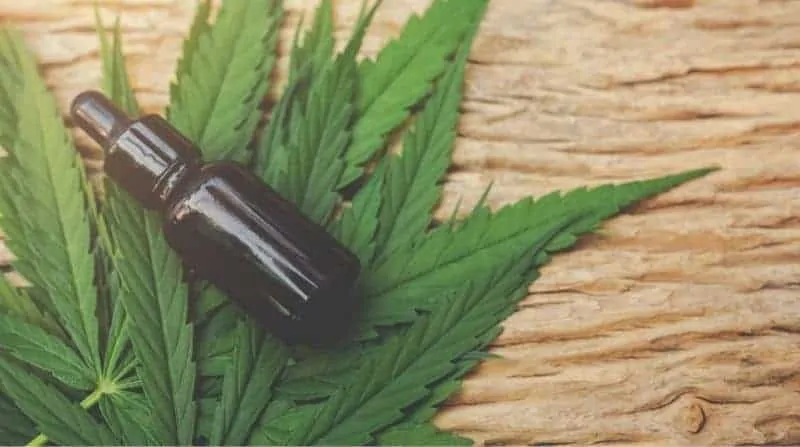Cannabidiol, also known as CBD, is one of the many cannabinoids found in cannabis plants. This particular cannabinoid accounts for up to 40% of the extract of the plant. While it was discovered in 1940, there has been a lot of focus on CBD in recent times and a lot of research is going on when it comes to studying the effects of the substance on anxiety, cognition, and pain.
2018 was a major year for CBD as Epidiolex, a cannabidiol drug, was approved by the FDA for the treatment of epilepsy disorders. While research is still undergoing to find out the effects of CBD on human physiology, its demand is definitely rising in the market.
There are a number of benefits associated with the chemical compound such as relieving pain and dealing with anxiety. In case you want to learn more, you can check out the best CBD product to deal with anxiety.
However, have you ever wondered how CBD is produced and extracted? In this article, we’re going to take a look at the process and technologies that are used in CBD oil production across the world and how the entire extraction process works.
Technologies used in CBD Oil Production
While CBD is obtained from the cannabis or hemp plants, a lot of people wrongly associate it with getting high. THC is the cannabinoid present in cannabis that produces the psychoactive properties but it is not present in CBD.
CBD is non-toxic and non-psychoactive. Most uses of CBD pertain to the medical industry as it can be used to tackle a lot of medical problems such as anxiety, inflammation, epilepsy, and others (check AllbestCBDoil for more explanation).
The most popular way of extracting CBD from the cannabis plant involves creating CBD oil. This oil is extracted from the resin glands of the plant, which are known as trichomes. These glands can be found in the seeds, stalk, flowers, and leaves of the plant.
The most popular ways of extracting CBD oil from the cannabis plant:
* CO2 Extraction Method
The CO2 Extraction Method is a common way to extract CBD oil from the plant. There are many sub-methods when it comes to the CO2 Extraction Method but the most common method is known as the supercritical method.
The idea behind the CO2 Extraction Method is to simply use CO2 to pull the different phytochemicals from the plant, including CBD. This method is pretty safe and highly effective but it requires really expensive equipment that needs to be managed professionally.
The process is as follows –
* CO2 gas is turned into a liquid by lowering its temperature to -69 degrees Fahrenheit and increasing the pressure over 75 psi. This is done using lab equipment in a professional setting.
* The temperature of the CO2 liquid is then increased until it reaches the point of being supercritical. At this stage, the CO2 can behave like gas and a liquid. Then the CO2 can be used for chemical extraction effectively without causing any damage to the CBD that will make it unfit for human consumption.
* Once the CO2 is heated up to the supercritical stage in a compressor, the solution is then passed through cannabis. Eventually, the solution is separated and broken down into the required parts with the trichomes and terpenes sent to a container meant for collection.
* Carrier Oil Extraction Method
This is one of the oldest methods of extracting CBD oil and not a lot of high-tech equipment is really required to extract CBD oil by this process. In this method, a carrier oil such as hemp seed oil or olive oil is used to extract CBD oil from the plant.
The process is pretty simple – it involves heating up the plant material so its chemical compounds are activated. It is then added to the carrier oil and then heated further until the CBD oil is extracted.
While this method is inexpensive, it is not possible to create big batches at a time using this method and it also affects the potency and shelf life of the final product.
* Solvent Extraction Method
Lastly, the solvent extraction method is another inexpensive method of extracting CBD oil which requires not a lot of equipment. Some of the solvents used in this method are popular chemical solvents like butane, hexane, grain alcohol, and ethanol.
The process for this method is also pretty simple – the source material is added to the solvent in order to draw out the chemical compounds into its liquid form. Eventually, the mixture is evaporated to separate the solvent and the CBD oil.
However, this method is not really ideal as it can leave traces of the solvent in the final product which can affect the potency of the CBD oil in a major way. The CBD oil created by this product can also cause side effects like nausea or vomiting.
Packaging and Distribution of CBD Oil
Lastly, once the CBD oil has been extracted, it is then packaged and distributed further. Since there are a number of ways in which CBD can be consumed, there are a lot of different ways of packaging the products too.
Some of the popular packagings for CBD oil include capsules, tinctures, sprays, creams, and vapes. Once the product has been packaged properly, it is ready for distribution across the world.
Conclusion
CBD is an exciting subject in medical research these days as the compound has proven to have a lot of positive effects on the human mind and body. While more research is undergoing, the technologies behind production, distribution, and packaging of CBD is also improving with lots of players in the market as of date.



